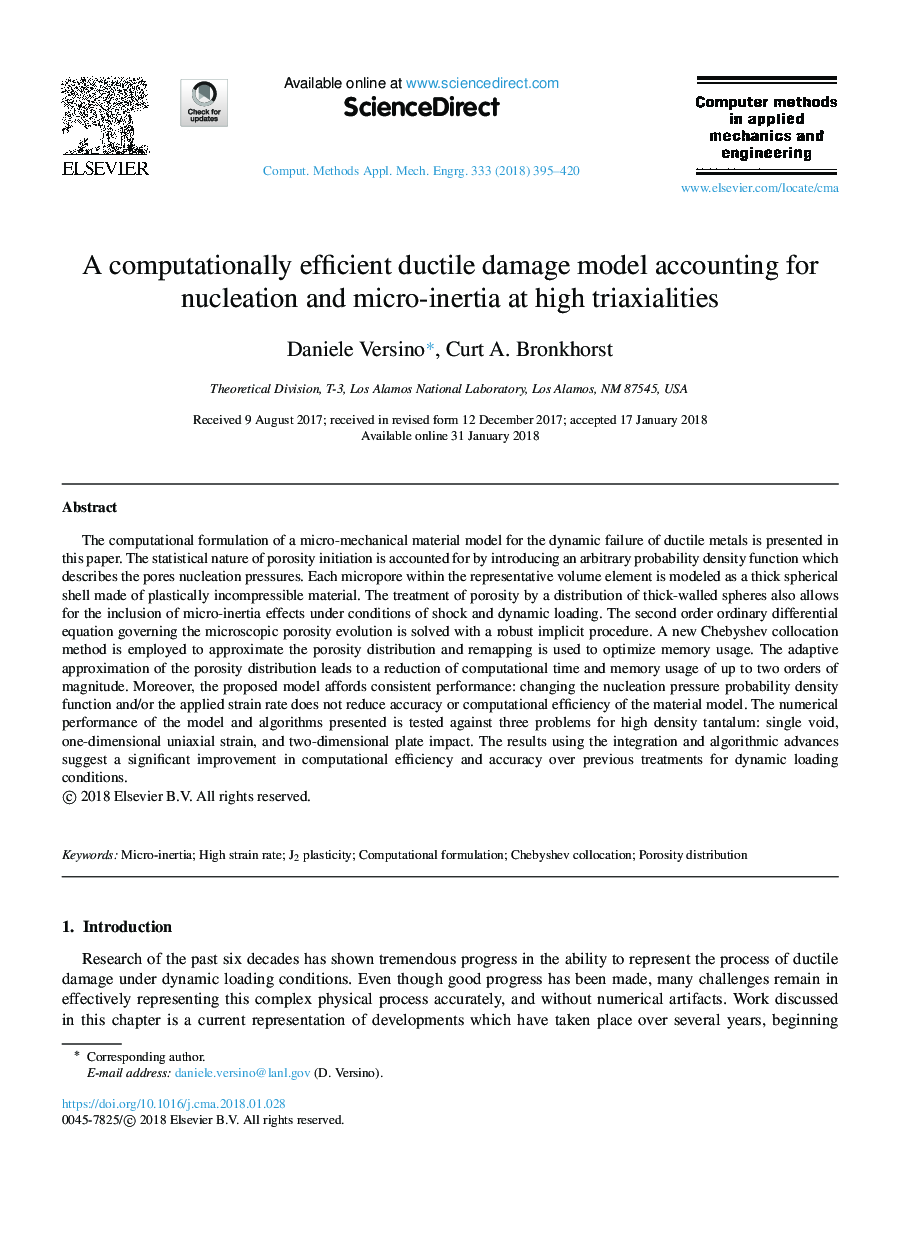| Article ID | Journal | Published Year | Pages | File Type |
|---|---|---|---|---|
| 6915579 | Computer Methods in Applied Mechanics and Engineering | 2018 | 26 Pages |
Abstract
The computational formulation of a micro-mechanical material model for the dynamic failure of ductile metals is presented in this paper. The statistical nature of porosity initiation is accounted for by introducing an arbitrary probability density function which describes the pores nucleation pressures. Each micropore within the representative volume element is modeled as a thick spherical shell made of plastically incompressible material. The treatment of porosity by a distribution of thick-walled spheres also allows for the inclusion of micro-inertia effects under conditions of shock and dynamic loading. The second order ordinary differential equation governing the microscopic porosity evolution is solved with a robust implicit procedure. A new Chebyshev collocation method is employed to approximate the porosity distribution and remapping is used to optimize memory usage. The adaptive approximation of the porosity distribution leads to a reduction of computational time and memory usage of up to two orders of magnitude. Moreover, the proposed model affords consistent performance: changing the nucleation pressure probability density function and/or the applied strain rate does not reduce accuracy or computational efficiency of the material model. The numerical performance of the model and algorithms presented is tested against three problems for high density tantalum: single void, one-dimensional uniaxial strain, and two-dimensional plate impact. The results using the integration and algorithmic advances suggest a significant improvement in computational efficiency and accuracy over previous treatments for dynamic loading conditions.
Related Topics
Physical Sciences and Engineering
Computer Science
Computer Science Applications
Authors
Daniele Versino, Curt A. Bronkhorst,
